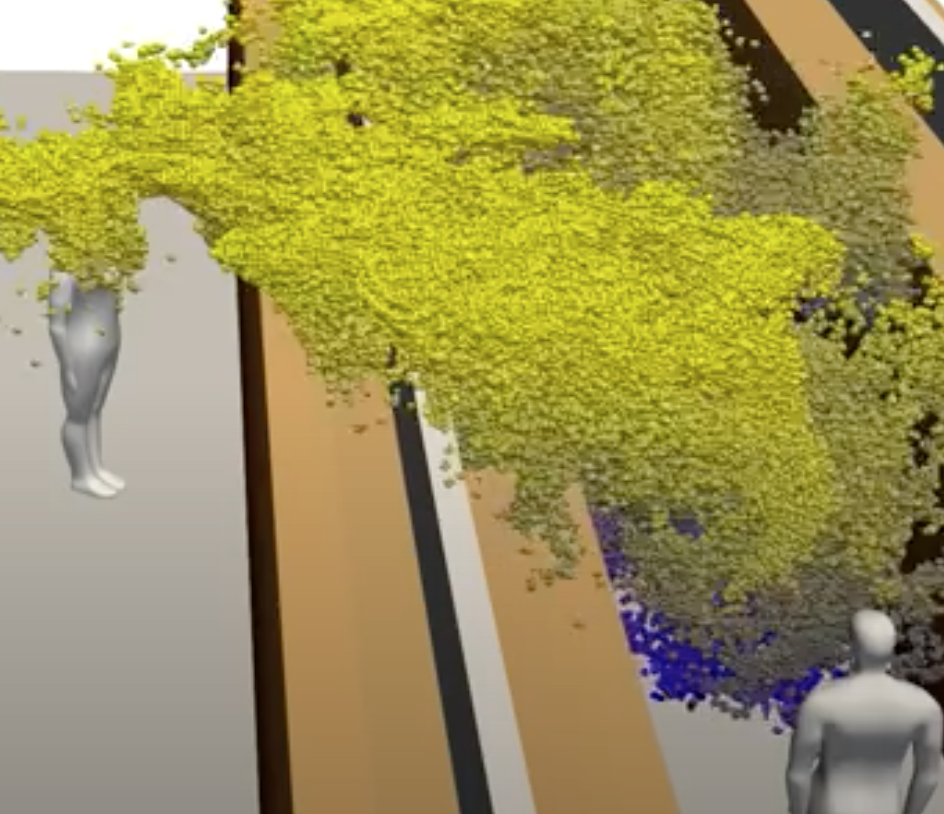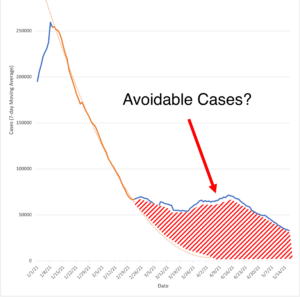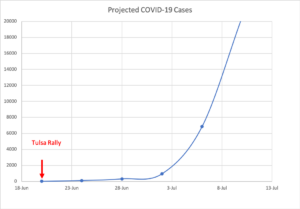You’ve probably seen this video. It seems to show death, floating across grocery aisles in brilliant shades of yellow and blue, rendered in exquisite detail as it lingers in the air, waiting for unsuspecting shoppers. This tour de force demonstrates the level of training and technology that the scientific community is focusing on this one adversary, but, in addition to digital droplets, it may also be spreading more anxiety than information.
The model was created by meteorologists in Finland who study atmospheric phenomena for a living. They have applied the incredibly sophisticated computer modelling techniques used to anticipate our weather to the air in a virtual supermarket. But, there are a few potential problems with that.
First, despite the technical flashiness, there is nothing new in either the Finnish computer model or the elegant laser photography showing microscopic droplets floating in a room in Japan. The potential for sneezing, coughing, and even talking to generate fine droplets has long been known. In fact, anyone who has ever breathed on a cold window knows that we are exhaling water vapor and microscopic droplets. Which brings us to the second limitation of the study, it does not address the important question of whether or not these droplets will make us sick.
The Finnish research team understands these limitations and notes that they cannot make recommendations because of that. They point out that, “Experts in infectious diseases and virology will examine the results and their importance in relation to the information being gathered on coronavirus and coronavirus infections.” But you can’t unsee the video. Millions of people now envision it as they walk through grocery store aisles. By the time those virologists weigh in, no one will be listening.
There are several reasons to suspect that the droplets are not infectious. First, water droplets the size of those depicted in the video vaporize in less than half a second. It is not clear how long that virus stays viable when not surrounded with water. Second, a study from Nebraska, which collected samples from the air around Covid-19 patients found viral RNA, but were not able to infect cell cultures with those particles. Third, if they were infectious, the reproductive number for the virus would be higher and those who work in stores would almost certainly be infected in high numbers. In fact, even household contacts of known cases have infection rates below 20%, in studies from Guangzhou and one in Shenzhen, which would seem unlikely if a single cough could spread the virus so easily.
There is one important message to take away from this, however. That person who is coughing should not be in the store. To make sure we are not that person, we should all wear masks, since this video would look very different if the killer in the snack aisle were wearing one.



